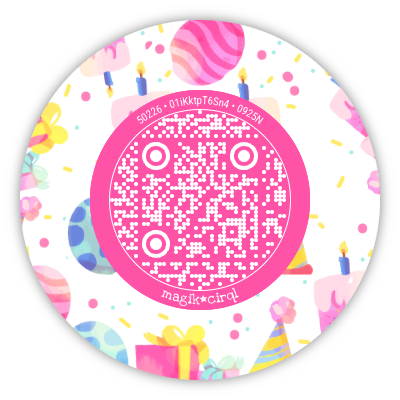Global QR Code Adoption: Industry & Regional Analysis
Comprehensive research into QR code adoption rates across industries and regions, revealing growth patterns, market opportunities, and the future of digital interaction.

The Global QR Code Landscape
QR code adoption has reached unprecedented levels worldwide, with significant variations across industries and geographic regions. Our comprehensive analysis of global usage patterns reveals fascinating insights into how different sectors are embracing this technology and the factors driving adoption rates.
Key Finding
Global QR code usage increased by 443% in 2023 compared to pre-pandemic levels, with some industries showing adoption rates exceeding 90%. This represents the fastest technology adoption in modern business history.
Industry Adoption Leaders
Different industries have embraced QR codes at varying rates, driven by specific use cases and customer needs:
Retail & E-commerce (94% adoption)
- Product information and reviews at point of sale
- Contactless payment processing
- Inventory management and stock checking
- Customer loyalty program integration
- Cross-channel shopping experiences
Food & Beverage (91% adoption)
- Digital menus and contactless ordering
- Nutritional information and allergen alerts
- Table service and payment processing
- Loyalty programs and promotional offers
- Supply chain transparency and traceability
Healthcare (87% adoption)
- Patient check-in and appointment scheduling
- Medical record access and sharing
- Prescription management and refills
- Health information and educational content
- Contact tracing and health monitoring
Transportation (83% adoption)
- Ticketing and boarding pass management
- Real-time schedule and route information
- Contactless payment for public transit
- Vehicle sharing and rental services
- Parking payment and management
Education (78% adoption)
- Digital textbooks and learning materials
- Attendance tracking and classroom management
- Campus navigation and information systems
- Event registration and communication
- Library services and resource access
Emerging Sectors: Rapid Growth
Several industries are experiencing explosive QR code adoption growth:
- Real Estate: 340% growth in virtual tours and property information
- Manufacturing: 280% increase in quality control and tracking
- Entertainment: 250% growth in event ticketing and experiences
- Government: 220% increase in citizen services and information
Regional Adoption Patterns
Geographic factors significantly influence QR code adoption rates:
Asia-Pacific (Leading Region)
- China: 95% adoption rate, $17T annual transaction volume
- India: 89% adoption, driven by digital payment initiatives
- Japan: 85% adoption, focus on efficiency and convenience
- South Korea: 82% adoption, integrated with social platforms
- Southeast Asia: 78% average, rapid mobile-first growth
Europe (Steady Growth)
- Nordic Countries: 76% adoption, emphasis on sustainability
- Germany: 71% adoption, industrial and automotive focus
- UK: 68% adoption, retail and hospitality leadership
- France: 65% adoption, cultural and tourism applications
- Southern Europe: 62% average, tourism-driven growth
North America (Accelerating)
- United States: 64% adoption, enterprise and retail focus
- Canada: 61% adoption, healthcare and education emphasis
- Mexico: 58% adoption, financial inclusion initiatives
Latin America (Emerging Markets)
- Brazil: 55% adoption, payment and commerce focus
- Argentina: 48% adoption, government services integration
- Colombia: 45% adoption, banking and fintech growth
Africa & Middle East (High Potential)
- UAE: 52% adoption, smart city initiatives
- South Africa: 38% adoption, financial inclusion focus
- Nigeria: 35% adoption, mobile payment growth
- Kenya: 42% adoption, M-Pesa integration success
Adoption Drivers & Barriers
Several factors influence QR code adoption rates across different markets:
Key Drivers
- Smartphone Penetration: Direct correlation with adoption rates
- Digital Payment Infrastructure: Enables commerce applications
- Government Support: Policy initiatives accelerate adoption
- Pandemic Response: Contactless requirements drove usage
- Consumer Education: Awareness campaigns increase adoption
- Business ROI: Proven value drives enterprise implementation
Common Barriers
- Digital Literacy: Limited technical skills in some demographics
- Security Concerns: Privacy and fraud worries
- Infrastructure Gaps: Poor internet connectivity in rural areas
- Cultural Resistance: Preference for traditional methods
- Regulatory Uncertainty: Unclear legal frameworks
- Implementation Costs: Initial setup and training expenses
Growth Projection
Industry analysts predict global QR code adoption will reach 85% across all sectors by 2027, with emerging markets showing the highest growth potential. The total addressable market is expected to exceed $22 billion annually.
Use Case Evolution
QR code applications have evolved significantly beyond simple information sharing:
- Payment Processing: 67% of all QR interactions involve transactions
- Information Access: 23% for product details and documentation
- Authentication: 18% for identity verification and access control
- Social Sharing: 15% for content distribution and networking
- Navigation: 12% for location services and wayfinding
- Entertainment: 8% for games, AR experiences, and media
Future Market Opportunities
Emerging trends point to significant growth opportunities:
- IoT Integration: Smart device connectivity and automation
- Augmented Reality: Immersive experiences and virtual overlays
- Blockchain Verification: Product authenticity and supply chain tracking
- AI Personalization: Dynamic content based on user behavior
- Voice Integration: Hands-free interaction capabilities
- Sustainability Tracking: Environmental impact monitoring
Industry Recommendations
Based on adoption patterns and market analysis, we recommend:
- Prioritize mobile-first QR implementations
- Focus on clear value propositions for users
- Invest in user education and onboarding
- Implement robust security and privacy measures
- Design for accessibility and inclusivity
- Monitor and optimize based on usage analytics
- Plan for scalability and future technology integration
Conclusion
QR code adoption has reached a tipping point globally, with widespread acceptance across industries and regions. The technology has evolved from a simple information carrier to a comprehensive platform for digital interaction, commerce, and communication.
Organizations that understand these adoption patterns and leverage them strategically will be best positioned to capitalize on the continued growth of QR technology. The future belongs to those who can seamlessly integrate QR codes into meaningful, value-driven user experiences.
Join the Global Adoption Wave
Be part of the QR code revolution with industry-leading tools and insights.
Industry Solutions & Analytics
Explore industry-specific solutions and track your adoption success.
Business Networking
QR solutions for professional use
Solutions Overview
Explore industry-specific solutions